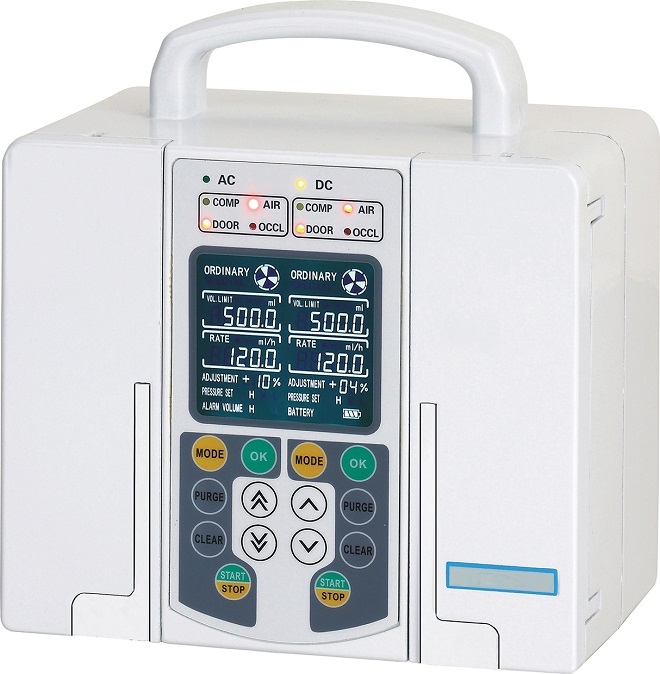
MSL exclusive Medical equipment knowledge sharing!
Watching a lot of medical equipment news and learning some knowledges of medical equipment. All the hardworking just to be a profesional medical equipments supplier and service better for you. We hope the information about medical we provide could helps you to choose your suitable products.
|
Types of Infusion pump Clicks:Updated:2018-04-04 15:04:22 |
|
Infusion pumps inject fluids, drugs or nutrients into the patient's circulatory system. Although subcutaneous, arterial and epidural infusions are sometimes used, they are usually used intravenously. The infusion pump can be infused in an unrealistically expensive or unreliable manner if performed manually by a nursing staff. For example, they can inject 0.1 mL per hour (too small for infusions), per minute injections, and patients require repeated bolus injections until the maximum number per hour (eg, in patient controlled analgesia) or volume. Fluids vary in time.
The pump's user interface typically provides the technician or nurse with detailed information on the type of infusion:
Continuous infusions usually consist of small pulse infusions, usually between 500 nanoliters and 10 milliliters, depending on the pump design, and the rate of these pulses depends on the programmed infusion rate.
Intermittent infusion has a "high" infusion rate, alternating with a low programmable infusion rate to keep the cannula open. The time is programmable. This mode is usually used to take antibiotics or other drugs that stimulate blood vessels.
What is an infusion pump

Patient control is on-demand infusion, usually with a preset ceiling to avoid poisoning. The rate is controlled by pressure pads or buttons that can be activated by the patient. This is the preferred method for patient-controlled analgesia (PCA) in which repeat low-dose opioid analgesics can be delivered and stopped before the dose that could lead to dangerous respiratory depression is reached.
Total parenteral nutrition usually requires an infusion profile similar to normal meal time.
Some pumps provide models that scale or control the amount based on time of day. This allows the circadian cycle that certain types of drugs may require.
In these courses, some pumps are designed to be portable, others are designed for hospitals, and there are special systems for charity and battlefield use.
Large-capacity pumps usually use some form of peristaltic pump. Traditionally, they use a computer-controlled roller to compress silicone rubber tubes that the drug flows through. Another common form is a set of fingers that press on the tube.
Small-capacity pumps typically use a computer-controlled motor to turn the screw and push the plunger onto the syringe.
The classic improvisation medical solution for Infusion pumps is to place a blood pressure cuff on a bag of liquid. The battlefield is equivalent to placing the bag under the patient. The pressure on the bag sets the transfusion pressure. Pressure can actually be read from the cuff indicator. The problem is that the flow rate varies greatly with the patient's blood pressure (or body weight) and the required pressure varies with the route of administration, which may lead to risk when an individual who is not trained in this method attempts.
Follow our facebook page: MSL(medical sing long) to get newest information of our company and products.
|

Address:85th, Baiyun Road, Shiqiao Street, Panyu District, GuangZhou City Sitemap
Tel:+86-20-84899760 Email:Cindy@medmsl.com / cindy@medicalequipment-msl.com Skype:msl_saler01 Mob:+86 138 2644 8637

Connect us in Whatsapp or Facebook Messenger

Messenger
